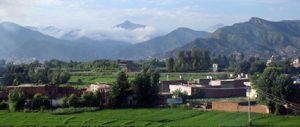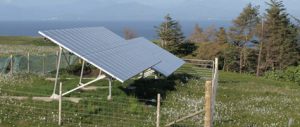“Naturally Nepal – once is not enough”. That’s the line the Nepalese government hopes will bring tourists flocking to the Himalayan state. But officials have an important question to face: will visitors still choose Nepal if its nature is no longer pristine? In a country where tourism is the mainstay of the economy, but where even the capital has no electricity for half the day (and other places fare worse) this issue has stirred a heated debate, framed as hydropower versus nature.
“Unbridled hydropower development will pose a threat to Nepal’s nature-based tourism if the issue is not taken seriously now,” said Megh Ale, an expert in white-water rafting and owner of The Borderlands Resort.
Ale has been struggling for about a decade to keep hydropower projects away from the Bhotekoshi, a river that flows near Nepal’s border with China and is widely regarded as the world’s toughest for white-water rafting. Since the government issued a licence to construct the 102-megawatt Middle Bhotekoshi hydroelectric project, Ale has been continuously lobbying to protect the river for adventure tourism, so far to no avail. Work on the project, which sits 100 kilometres from Nepal’s capital Kathmandu and on the Araniko Highway that links Nepal to China, started at the beginning of this year. It is scheduled to complete by the end of 2015.
Thousands of adventure tourism aficionados arrive every year to raft the Bhotekoshi river and bungee jump its deep gorge in Nepal’s Sindhupalchowk district. “We are not against hydropower development as the country needs energy, but rivers are not only for hydropower – they have other purposes too,” said Ale. “Issuing licences for hydropower construction on an ad hoc basis will put the country’s tourism in peril.”
The project developers say that they are going to build infrastructure that will actually boost tourism. “It will help bring more tourists as the company will invest on managing rafting sites on the river banks,” said Kul Man Ghising, managing director of Chilime Hydropower Company, which is developing the Middle Bhotekoshi hydro project. “Funds will also be provided to local communities to work on protecting the environment.”
Tourist operators say a major rafting section of the river will dry up and there is no possibility of world-class rafting if the dam is built. Project developers meanwhile argue that only a two-kilometre stretch will be affected, and that “there are enough stretches in the river that will remain as they are, and rafting will be possible.” Agreement appears out of reach.
The government has already issued construction and generation licences to 74 projects that are supposed to generate about 1,800 megawatts of power. It is processing licence applications for 52 more projects. Other rivers popular with white-water rafting enthusiasts will also be affected by some of these hydropower projects – such as Karnali in western Nepal. Tourism entrepreneurs and trekking agents have been lobbying for some rivers to be kept free of hydro projects, but their calls so far appear to have fallen on deaf ears.
More than 600,000 tourists visit Nepal every year and that number is rising. Most of them want to go hiking in the Himalayas or take part in adventure tourism activities. These tourists have been keeping Nepal’s economy afloat for decades. But it is still very hard for tourist businesses to convince politicians to take their case into account when planning hydropower development. “Nobody hears our voice,” complained Ale, who is also president of Nepal River Conservation Trust. “We should keep some rivers intact for tourism as these are the gifts of nature to our country. The development of hydropower is unquestionably needed but it shouldn’t be at the cost of everything else.”
But given the energy shortage and the undoubted hydropower potential in Nepal’s fast-flowing rivers, politicians seem blind to these concerns. And their promise of electricity is proving popular. Addressing a hydropower summit earlier this year, prime minister Baburam Bhattarai formulated a slogan: “Democracy + Hydropower = New Nepal”. It proved a sensation. Nowadays, anyone questioning dam schemes in Nepal is termed an anti-development activist.
There is a strong political consensus in favour of hydropower development, but environmentalist fears have not gone away. “Environment or nature protection has become a buzzword in the government, but when you look at actions it’s disappointing,” said Barry Dalal Clayton, senior fellow at the London-based International Institute for Environment and Development (IIED). Clayton, who has just released a report on Nepal called Safeguarding the future, securing Shangri-La, added: “Everybody talks about environment, but when it comes to action the economy dominates putting environment in the backyard. It’s a global trend and Nepal is no exception.”
The political consensus is having an effect. The Department of Electricity Development in the Ministry of Energy has already issued hydropower survey licences to more than 500 of the 1,300-plus developers who have sought them, according to its own figures. Going beyond the survey stage, applications to construct 52 projects supposed to generate 3,500 megawatts are also pending. “There is the need to develop hydropower projects for the country, as energy is the major thing for economy. However, environmental issues and the natural beauty of the country should not be compromised, for which the ministry takes environmental impact assessments seriously before implementing any project,” said Hariram Koirala, secretary in the Ministry of Energy.
Hydropower development in Nepal has suffered for many years due to political instability and bureaucratic delays. Now, the country is hastening to catch up. The ministry released a 20-year hydropower plan in 2010, according to which Nepal will generate 25,000 megawatts by 2030. Theoretically, Nepal’s total hydropower generation potential is as much as 83,000 megawatts, of which around 40,000 megawatts is said to be viable. Right now, the total generation of electricity in the country is only 700 megawatts in summer and 400 megawatts in winter, when many of the rivers freeze in their upper reaches and the flow of water diminishes.
But in this haste, other important concerns are getting short shrift. “Hydro development is slow at present but ultimately all these projects will be implemented and there won’t be any river flowing freely in a country that boasts more than 6,000 rivers and rivulets,” lamented Ale. “We need to leave some rivers free flowing to save river tourism, for which people from around the world come here every year.”
Ramin Sharma is a freelance journalist based in Kathmandu.
Homepage image by Boggin


